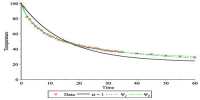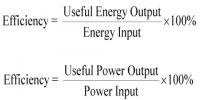Kinematics is a subfield of classical mechanics that describes the motions of points, bodies, and body systems that do not consider them as the cause of movement. Kinematics is the study of the mechanical points, the motions of bodies, and systems that do not take into account their respective physical properties and the forces that work in them. Research is often referred to as the geometry of motion and it mathematically models these motions using algebra. A kinetics problem begins by describing the geometry of the system and declaring the initial state of any values of position, speed, and acceleration of points located within the system. Then, using logic from geometry, position, speed, and acceleration of any unknown part of the system can be determined.
Kinetics systems are modeled to calculate things like speed and proportions. An example of a body in a system is the transmission gears of the car. Kinetics is used in astronomy to describe the motions of celestial bodies and the collection of such bodies. In mechanical engineering, robotics and biomechanics dynamics are used to describe the motion of systems made up of connected parts (multi-link systems) such as engines, robotic arms, or human skeletons. These models are used to engineer all kinds of mechanical devices and to model the motions of existing physical bodies, including motion-immobility, the body-hinged mechanics of the human skeleton, or the celestial body motion in astronomy, also known as the Starter dynamics.
Geometric transformations, also called rigid transformations, are used to describe the movement of elements in a mechanical system, facilitating the derivation of motion equations. These are also central to dynamic analysis. Kinematics refers to the spatial position of a body or material particle system and the rate at which particles move (velocity), and the rate at which their velocity changes (acceleration). When the causal forces are neglected, only the motion details determine the path for the finite moving particles. Uncontrolled, or free, forces in motion determine the size of the path. While dynamics can help determine whether a design is theoretically possible, there are more complexities when designing something for the real world. Without considering the materials and the force that is applied to them, many theoretically possible designs will be at risk of failure.
The process of measuring the amount of motion used to describe motion is motion analysis. In engineering, for example, kinetic analysis can be used to look for the dynamics of a given system and work in reverse, using kinetic synthesis to design a method for a desired range of motion. Kinetics considers physical strength and physical properties as perceived inertia and tensile or sensory energy. These features, combined with physics and thermodynamics, can take a theoretical model from dynamics and help determine how an efficient, reliable and functional real-world system can be engineered.















